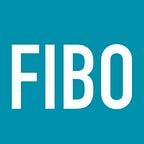Fibo — Pricing on Value and Hypothesis Testing
How did you figure out how much to charge your customers?
Fibo replaces paperwork in the field with a simple mobile app. Our early customers were saving 4 hours per week for each employee by using us for timecards and work logs. That worked out to about $320 in savings per month. We wanted our pricing to be attractive, so we decided to charge 5–10% of the saving, and settled on $20 per user/month. We’ll definitely experiment with other numbers in the future.
What metrics are important to you and why?
We care deeply about product engagement, measured by DAU, as it is the leading indicator of whether the product is adding value for our customers. It is also directly tied to our revenue model as we charge monthly for each active user. Strategically it will help us lower churn and create pricing power in the future.
How do you balance trying new customer acquisition strategies and doubling down on ones which are working?
We have tested several hypothesis. For example, we had a hypothesis that emailing customers about our product could pique their interest in a demo, which could lead to a sale. That hypothesis worked out really well and we spend a lot of time on email marketing now. One hypothesis that didn’t work out for us was testing paid advertising. We tried AdWords and FB Ads with little success. We got traffic but conversion was low. We decided we’d iterate on our website and then give it another go. We try to run at least 3–4 new experiments every month.
